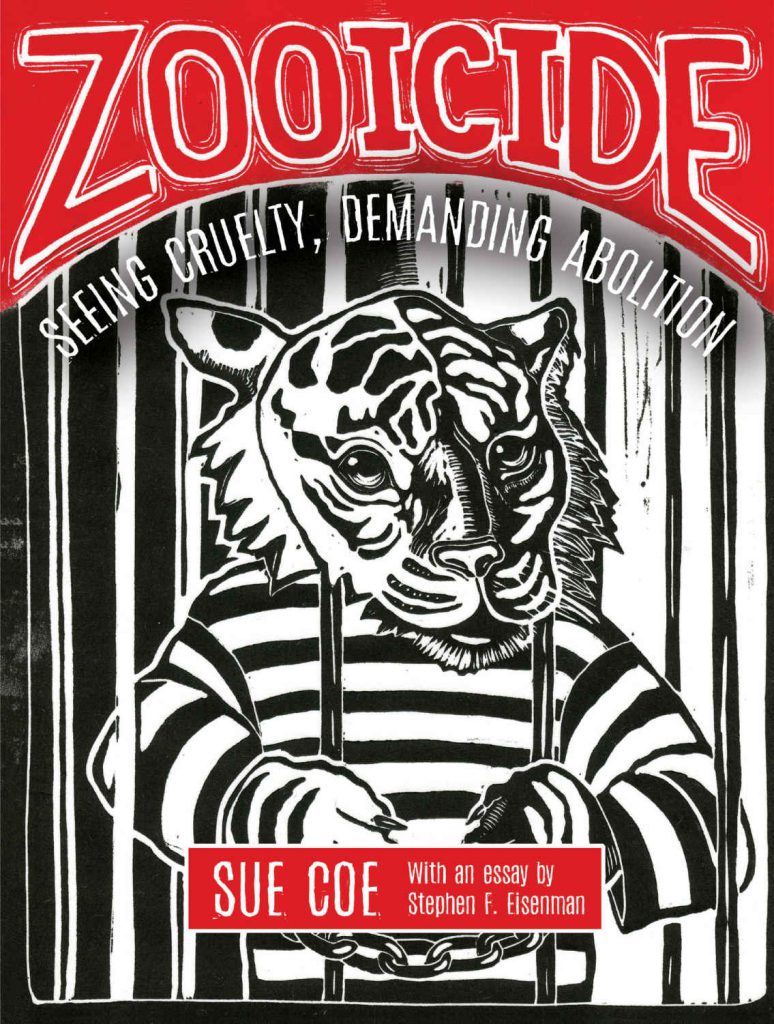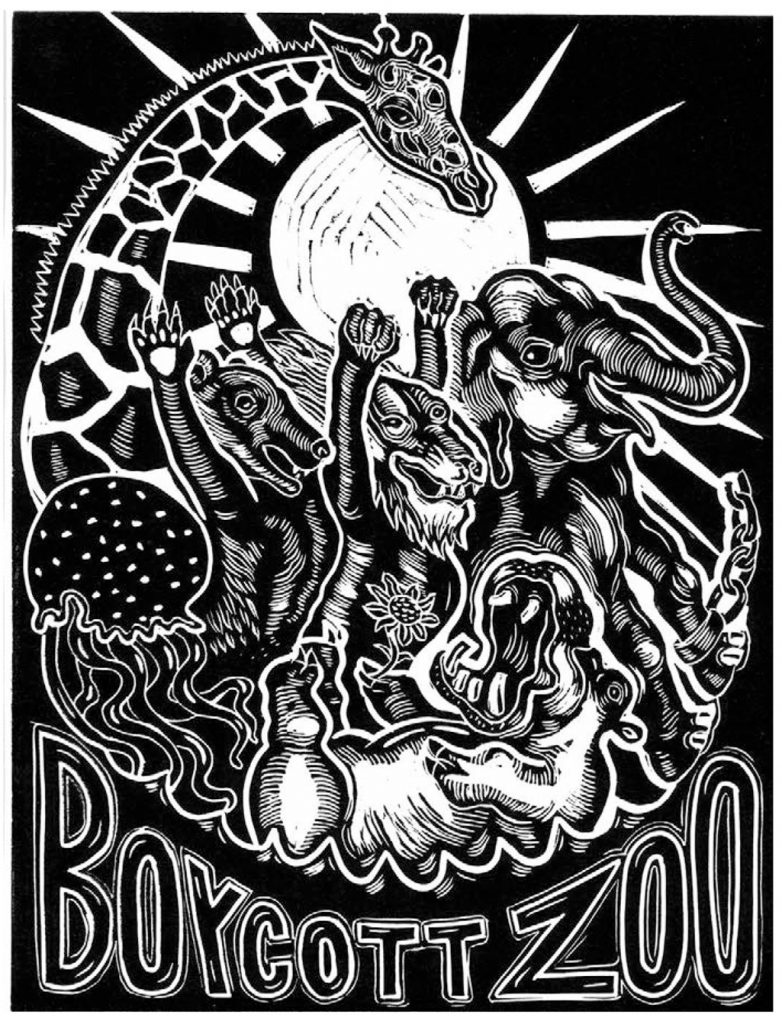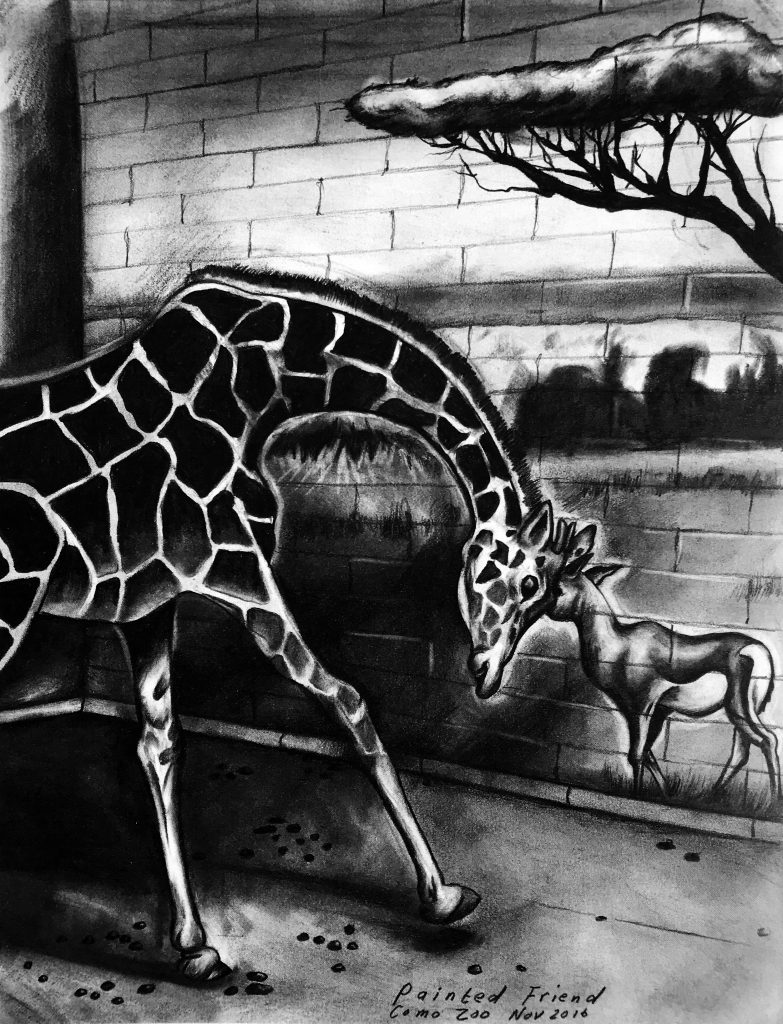April 26, 2019
I ordered Zooicide after I heard Sue Coe speak about it on the Our Hen House podcast. Her pitch dark view on the zoo with comments such as ‘teaching kids about animals in the zoo is like teaching about sex by watching porn’ or ‘why people go to the zoo is because its a safe place for humans’ but also her proposal for a menagerie on paper made me want to see her drawings and know more about the radical side of the anti-zoo spectrum.
The book takes off with an essay by Stephen F. Eisenman. The Capitalist Zoo. Eisenman brings us to the London Zoo Refuge in the year 2050 where zoos no longer exist and takes us back in time to the Gardens of Intelligence in ancient China, the rise of menageries as a symbol of dominance and how they changed from aristocratic power institutions to laboratories for new species and entertainment. How they have become ‘visual tokens of rational systems of taxonomic classification’. According to Eisenman this is the start of the Capitalist Zoo that he divides into three types:
The Pre-Capitalist Menagerie, where animals are taken from the wild to exhibit and being replaced by another when dead.
The Industrial Capitalist Zoo, created by investors, stocked with animals with the purpose to enhance increasing its value.
The Neo-Liberal Zoo, created by investors, stocked with animals, adding didactics, research, marketing, breeding and sponsorships to increase value and corporate wealth.
The three types are keenly anecdoted. Interesting is how the industrial capitalist type is supported with the history of the giraffe ‘La Belle Africana’, a gift from Egypt to France that was displayed in Jardin des Plants in Paris and had unleashed a sensation with big commercial effect. And how this zoo 25 years later was converted in Jardin Zoologique with a human zoo. The essay is full of illustrations on how animals in zoos, like colonial subjects, are subjects of thingification. Eisenman is very clear: ‘Even today, colonialism and hegemony, in addition to profit, are fundamental to zoos and the exhibition of animals.’
What I found thought-provoking is the link Eisenman creates between the zoo and Capitalist Agriculture. He claims that each step in advancing the production of food is accompanied by a widening of the moral divide between human and animal. So that people came to accept animals as commodity. The Capitalist Zoo removed the ‘halo’ of animals. It turned the elephant and the tiger into zoo attractions. It changed dolphins and seals into acrobats. One moment the animal is being gazed at and the next it is eaten as hamburger or lamb chop.
Eisenman writes as dark as Coe draws. The mainly black and white drawings are furious and painful but made out of deep admiration for her relatives, the other animals. Apart from some technological examples of Asian Zoos with VR animals and Coe’s idea that we should gaze at animals by drawing them – ‘draw a city pigeon!’ – for Coe and Eisenman a successful future of the zoo is no zoo.

Zooicide by Sue Coe
Publisher: AK Press (October, 2018)
ISBN: 9781849352864

